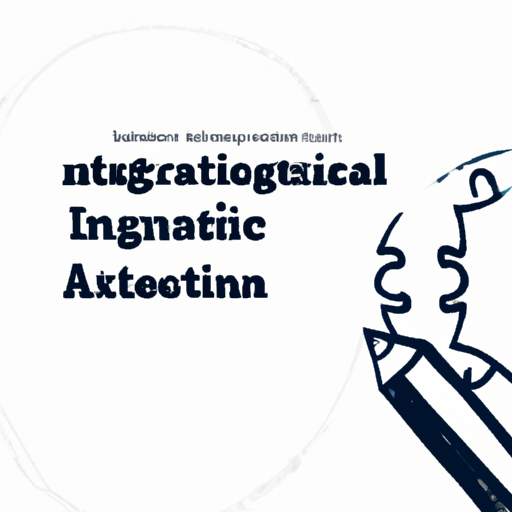Imagine you’re in a classroom, and instead of a teacher, there’s a robot helping you learn. It might sound cool, but there are some important things to think about. When we use Artificial Intelligence (AI) in education, there are ethical considerations we need to keep in mind. Ethics are like rules that help us do the right thing and make sure everyone is treated fairly. This is especially important when working with AI because we want to make sure it’s helping us learn in the best way possible. So, let’s explore what ethical considerations we should think about when using AI in education and make sure we use technology in a responsible and fair way.

1. Data Privacy and Security
1.1. Informed Consent
When using AI in education, it is important to consider the issue of informed consent. Informed consent means that individuals, in this case, students and their parents or guardians, should have a clear understanding of how their data will be used and have the choice to opt in or out. This means that schools and educational institutions should be transparent about the data they collect, the purposes for which it will be used, and any potential risks involved. Students and their families should have the right to decide whether they feel comfortable sharing their personal information and participating in AI-driven educational activities.
1.2. Data Protection
Data protection is another critical aspect of using AI in education. Schools and educational institutions should take measures to ensure that student data is stored securely and protected from unauthorized access or breaches. This includes implementing strong security measures such as encryption, access controls, and regular data backups. It is also important to have policies and procedures in place to monitor and respond to any security incidents that may occur. By prioritizing data protection, educational institutions can help safeguard the privacy and confidentiality of student information.
1.3. Secure Storage and Transmission
When using AI in education, data is often collected, stored, and transmitted between various systems and platforms. It is essential to ensure that this data is securely stored and transmitted to prevent unauthorized access or interception. Encryption, both at rest and in transit, can play a crucial role in protecting sensitive student information. Educational institutions should also choose reputable providers and platforms that adhere to industry-standard security practices. Regular audits and assessments can help identify any vulnerabilities in the storage and transmission processes, allowing for timely remediation and continuous improvement in data security.
2. Transparency and Explainability
2.1. Explainable AI
Explainable AI refers to the ability to provide clear and understandable explanations of how AI systems make decisions or recommendations. In the context of education, it is important for students and teachers to understand how AI algorithms work and why they generate certain outcomes. This helps build trust and allows users to have a better understanding of the educational process. Educational institutions should prioritize the use of AI systems that are transparent and provide explanations, ensuring that students and teachers are aware of the factors influencing AI-generated results.
2.2. Algorithm Bias and Discrimination
Algorithm bias and discrimination are significant ethical concerns when using AI in education. AI systems can exhibit biases if they are trained on biased or incomplete data, leading to unfair outcomes or perpetuation of existing inequalities. Educational institutions should carefully select and train AI algorithms to minimize bias and ensure that they are inclusive and equitable. Regular monitoring and auditing of AI systems can help identify and address any biases or discriminatory patterns, ensuring that education is fair and accessible to all students, regardless of their background or characteristics.
2.3. Accountability and Responsibility
When using AI in education, it is crucial to establish clear lines of accountability and responsibility. Educational institutions should be accountable for the decisions and actions of AI systems, ensuring that they are used responsibly and ethically. This includes having mechanisms in place to address any concerns, complaints, or unintended consequences arising from the use of AI. Transparency in decision-making processes and involving stakeholders, such as students, teachers, and parents, can help ensure that the use of AI is aligned with educational goals and values. Regular evaluation and review of AI systems can also contribute to continuous improvement and accountability.
3. Equity and Access
3.1. Bridging the Digital Divide
One of the ethical considerations when using AI in education is to address the digital divide. The digital divide refers to the unequal access to technology and the internet that exists between different socioeconomic groups. By implementing AI-driven educational tools and initiatives, educational institutions should aim to bridge this divide and provide equal opportunities for all students. This can be achieved by ensuring access to necessary technology, internet connectivity, and digital resources, regardless of a student’s background or location. By prioritizing equity and inclusivity, AI in education can help level the playing field and empower all students to succeed.
3.2. Ensuring Accessibility
In addition to bridging the digital divide, AI in education should also focus on ensuring accessibility for students with disabilities. Educational institutions should consider the needs of students with diverse abilities and provide inclusive AI tools and resources. This may include features such as text-to-speech, closed captioning, alternative input methods, or adaptive learning technologies. By designing AI systems with accessibility in mind, educational institutions can create an inclusive learning environment where all students can actively participate and benefit from AI-driven educational experiences.
3.3. Avoiding Reinforcement of Socioeconomic Inequalities
The use of AI in education should not perpetuate or reinforce socioeconomic inequalities. It is essential to be aware of the potential biases that AI algorithms may possess and actively work to mitigate them. Educational institutions should ensure that AI-driven educational tools are not biased towards certain socioeconomic groups and provide equal opportunities for all students, regardless of their socioeconomic status. By actively addressing these inequalities, AI in education can contribute to a more equitable and just educational system.
4. Pedagogy and Human Interaction
4.1. Balancing Automation and Human Input
Incorporating AI into education should strike a balance between automation and human interaction. While AI can assist and enhance educational processes, it should not replace the role of human teachers and educators. Educational institutions should ensure that AI systems are used to augment and support human instruction, rather than replace it entirely. It is crucial to maintain the human touch in education, as teachers play a vital role in understanding and responding to the unique needs of students. By finding the right balance between automation and human input, AI can enhance educational experiences while preserving the pedagogical value of human interaction.
4.2. Ethical Considerations for Student-Teacher Relationships
Using AI in education raises ethical considerations for student-teacher relationships. While AI systems can provide personalized recommendations and feedback, it is important to ensure that the student-teacher relationship remains intact. Educational institutions should establish clear guidelines and ethical standards to ensure that AI systems do not undermine the trust and rapport between students and teachers. This may involve setting boundaries for the use of AI in assessment and evaluation and prioritizing human guidance and support in sensitive or emotional situations. By safeguarding the student-teacher relationship, AI can complement the educational process without diminishing the importance of human interaction.
4.3. Maintaining Quality Education
Quality education should remain a top priority when incorporating AI into educational practices. Educational institutions should consider how AI can enhance the learning experience and improve educational outcomes. This may involve leveraging AI to provide personalized learning resources, adaptive assessments, or targeted interventions. However, it is crucial to ensure that the quality of education is not compromised by overreliance on AI. Educational institutions should continually assess and evaluate the effectiveness of AI-driven initiatives, ensuring that they align with educational goals and contribute to the overall quality of education provided to students.

5. Bias and Fairness
5.1. Identifying and Mitigating Bias
When using AI in education, it is important to proactively identify and mitigate biases in AI algorithms and systems. Bias can occur when AI models are trained on data that is not representative of the diverse student population. Educational institutions should carefully select and evaluate data used for training AI algorithms, ensuring that it is diverse, inclusive, and free from bias. Regular audits and evaluations can help identify any potential biases in AI systems and take necessary corrective actions. By addressing bias, educational institutions can ensure that AI in education is fair and unbiased, providing equal opportunities for all students.
5.2. Fair Assessment and Grading
AI in education can be used to automate the assessment and grading process. However, it is essential to ensure that the assessment is fair and unbiased. Educational institutions should take measures to validate the accuracy and fairness of AI-driven assessment tools, considering the potential limitations and biases of such systems. It is important to provide clear guidelines and instructions for teachers and students on how AI-driven assessments are used and how to interpret the results. By ensuring fair assessment and grading, educational institutions can maintain the integrity and validity of the educational process.
5.3. Avoiding Stereotypes
AI in education should avoid perpetuating stereotypes and biases that are present in society. AI algorithms learn from the data they are provided, and if this data contains stereotypes or bias, the AI system may inadvertently reinforce them. Educational institutions should implement measures to prevent and address stereotypes in AI-driven educational tools and resources. This may involve regular monitoring and auditing of AI systems, evaluating their performance and impact on students. Ongoing training and awareness programs can also help educate stakeholders about the potential pitfalls of stereotypes and biases in AI in education.
6. Psychological and Emotional Well-being
6.1. Monitoring and Safeguarding Mental Health
When using AI in education, monitoring and safeguarding the mental health of students is of utmost importance. AI systems can gather a significant amount of data on students, including their academic progress and behavioral patterns. Educational institutions should utilize this data to identify students who may be at risk and in need of additional support. However, it is crucial to handle this information with care and prioritize student privacy. AI systems should be designed to respect and protect students’ mental health privacy, ensuring that their sensitive information is not misused or disclosed without their consent. By monitoring and safeguarding mental health, AI in education can contribute to students’ overall well-being.
6.2. Encouraging Personal Connection and Empathy
While AI can provide personalized learning experiences, it is essential not to overlook the importance of personal connection and empathy in education. Educational institutions should foster an environment that encourages personal connection between students and teachers. AI systems can assist in this by providing insights and recommendations to personalize interactions, but they should not replace the human connection. Teachers should be encouraged to establish meaningful relationships with their students, showing empathy, and providing emotional support when needed. The use of AI in education should complement and enhance these personal connections, rather than diminish their importance.
6.3. Protecting Against Emotional Manipulation
AI systems used in education should be ethically designed to protect against emotional manipulation. Students may be vulnerable to persuasive techniques employed by AI systems, which can potentially exploit their emotions and affect their decision-making. Educational institutions should establish clear guidelines and ethical standards to ensure that AI systems do not engage in emotional manipulation. Transparent and explainable AI can help students understand the factors influencing AI-generated recommendations and enable them to make informed decisions without undue emotional influence. By protecting against emotional manipulation, AI systems can be used responsibly and in the best interest of students’ psychological and emotional well-being.

7. Dependency and Autonomy
7.1. Overreliance on AI
It is important to avoid overreliance on AI in education to maintain students’ autonomy and critical thinking abilities. While AI can provide valuable assistance, students should be encouraged to think independently, question assumptions, and develop their own problem-solving skills. Educational institutions should use AI as a tool to support and augment student learning, rather than as a replacement for independent thinking. By fostering a balanced approach, educational institutions can ensure that students are active participants in the learning process, retain their autonomy, and develop important skills for their future.
7.2. Ensuring Student Autonomy
When using AI in education, it is important to prioritize students’ autonomy. Educational institutions should ensure that students have agency and control over their own educational experiences. This includes providing students with the ability to personalize their learning paths, make choices, and exercise autonomy in decision-making. AI systems should be designed to empower students, providing them with opportunities for self-directed learning and growth. By ensuring student autonomy, educational institutions can create a more engaging and meaningful learning environment.
7.3. Encouraging Critical Thinking
AI in education should encourage critical thinking skills rather than stifling them. It is important to design AI tools and resources in a way that promotes inquiry, reflection, and analysis. Educational institutions should encourage students to question AI-generated results, evaluate the reasons behind recommendations, and critically assess the limitations and biases of AI systems. By fostering critical thinking skills, educational institutions can help students develop a deeper understanding of AI and its applications, enabling them to become informed and responsible users of AI technology.
8. Ethical Use of Student Data
8.1. Consent and Purpose Limitation
The ethical use of student data in AI-driven education requires obtaining informed consent and adhering to purpose limitation. Educational institutions should obtain explicit consent from students and their parents or guardians before collecting and using their data. It is important to clearly communicate the purposes for which student data is collected and ensure that it is used solely for educational and administrative purposes. Educational institutions should refrain from sharing student data with third parties without consent, unless required by law or for valid reasons. By respecting consent and purpose limitations, educational institutions can uphold the privacy and rights of students regarding their data.
8.2. Anonymization and De-identification
The anonymization and de-identification of student data are crucial ethical considerations when using AI in education. Educational institutions should take measures to protect the privacy of students by removing or de-identifying any personally identifiable information from data used for AI training or analysis. This helps prevent the re-identification of students and safeguards their privacy. Additionally, educational institutions should regularly review and update their anonymization techniques to address evolving privacy risks. By implementing robust anonymization and de-identification practices, educational institutions can mitigate privacy concerns associated with the use of AI in education.
8.3. Sharing and Monetization of Data
Educational institutions should be cautious when sharing and monetizing student data collected through AI systems. Student data should only be shared or monetized with full consent from students and their parents or guardians. In cases where sharing or monetization is deemed necessary, educational institutions should prioritize the privacy and best interests of students. Transparent policies and procedures should be in place to govern the sharing and monetization of student data, ensuring that it is done ethically and responsibly. By adhering to ethical standards in data sharing and monetization, educational institutions can protect student privacy while still benefiting from AI-driven educational initiatives.

9. Societal Impact
9.1. Impact on Employment and Job Market
The use of AI in education can have an impact on employment and the job market. As AI systems become more advanced, certain tasks and roles traditionally performed by teachers and educators may be automated. However, it is important to recognize that AI cannot completely replace the human touch in education. While some jobs may evolve or change, new opportunities may also arise. Educational institutions should prepare students for the evolving job market by providing them with essential skills such as critical thinking, creativity, and adaptability. By embracing AI in education, educational institutions can equip students with the skills and knowledge necessary for the future workforce.
9.2. Technological Dependence
The use of AI in education should be balanced with a consideration for technological dependence. While AI can enhance educational practices, it is important not to become overly reliant on technology. Educational institutions should ensure that students have a well-rounded education that includes non-technological skills and experiences. This may involve promoting activities such as physical exercise, teamwork, creativity, and critical thinking that do not solely rely on AI or technology. By addressing technological dependence, educational institutions can foster holistic development and provide students with a balanced education.
9.3. Cultural and Ethical Considerations
AI in education should take into account cultural and ethical considerations to ensure that it aligns with societal values. Different cultures may have varying perspectives on privacy, data usage, and the role of technology in education. Educational institutions should respect cultural diversity and consider local ethical norms when implementing AI-driven educational initiatives. This includes addressing cultural biases in AI algorithms, ensuring the inclusion of diverse perspectives and voices, and being mindful of any potential cultural or ethical conflicts. By considering cultural and ethical dimensions, educational institutions can ensure that the use of AI in education is appropriate and respectful of societal values.
10. Continuous Monitoring and Evaluation
10.1. Ethical Audits and Compliance
Educational institutions should conduct ethical audits and ensure compliance with ethical guidelines and standards when using AI in education. Regular audits can help identify any potential ethical issues or concerns, allowing for timely corrective actions. This includes assessing the performance and impact of AI systems, evaluating data privacy and security practices, and identifying any biases or unfairness. By continuously monitoring and auditing AI-driven initiatives, educational institutions can ensure that ethical standards are upheld and make improvements as needed.
10.2. Responsiveness to Ethical Concerns
Educational institutions should be responsive to ethical concerns raised by students, teachers, parents, and the wider community. It is important to have mechanisms in place to receive feedback, address concerns, and provide avenues for redress. This may involve establishing channels for reporting ethical issues, setting up ethical review boards, or conducting regular surveys and consultations. By actively addressing ethical concerns, educational institutions can demonstrate their commitment to ethical AI practices and build trust with stakeholders.
10.3. Regular Ethical Training
Educational institutions should prioritize regular ethical training for all stakeholders involved in AI-driven educational initiatives. This includes teachers, administrators, students, and parents. Ethical training should cover topics such as data privacy, bias mitigation, transparency, and the responsible use of AI. By providing ethical training, educational institutions can raise awareness, promote responsible AI practices, and empower stakeholders to make informed decisions about AI in education.
In conclusion, the use of AI in education brings great potential for enhancing teaching practices and improving educational outcomes. However, it is essential to consider and address the ethical considerations that arise with the integration of AI in education. From data privacy and security to the societal impact, educational institutions should prioritize transparency, fairness, and student well-being when using AI. By applying ethical principles and implementing safeguards, AI in education can contribute positively to the learning journey of students while fostering a responsible and inclusive educational environment.






